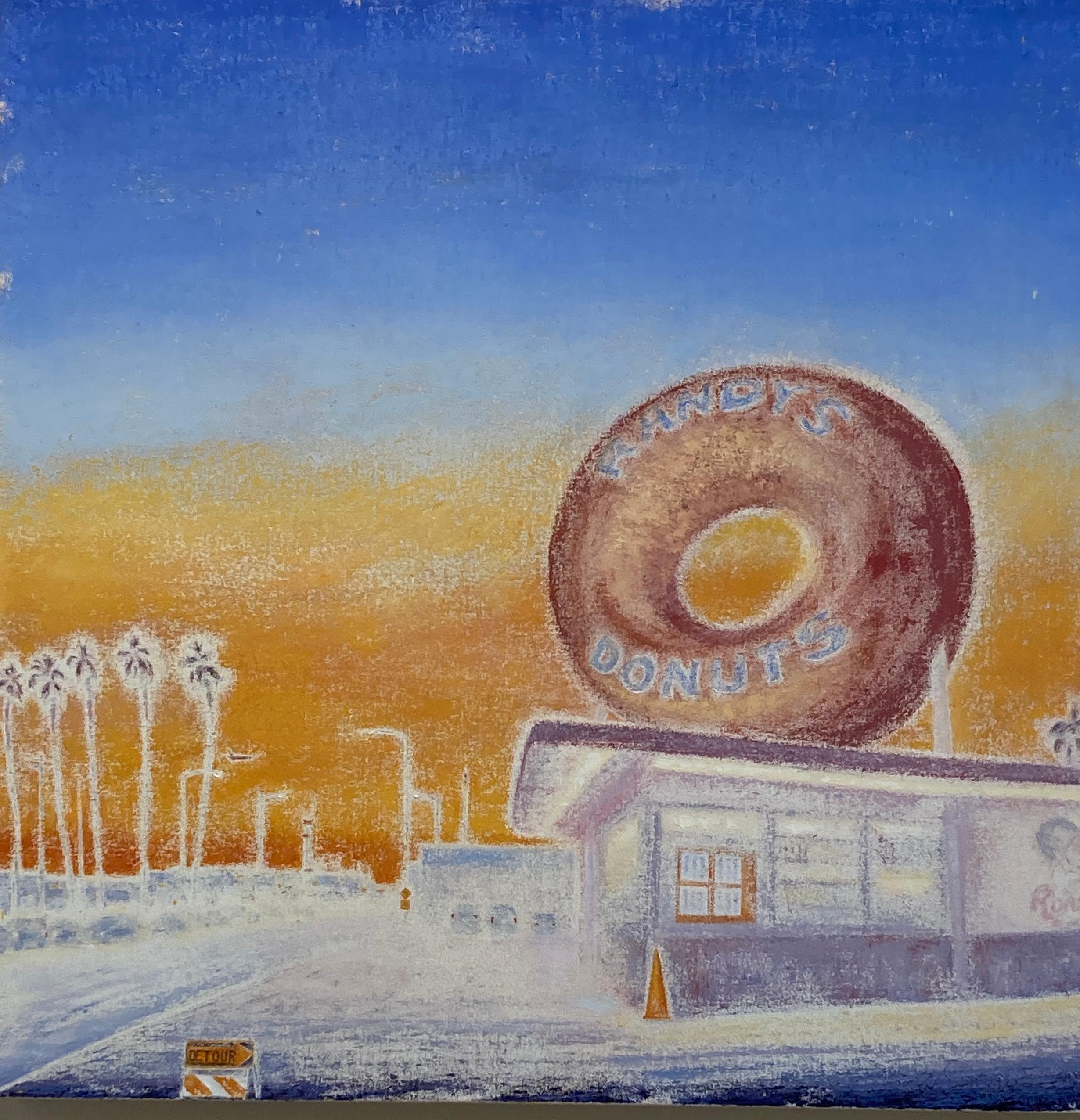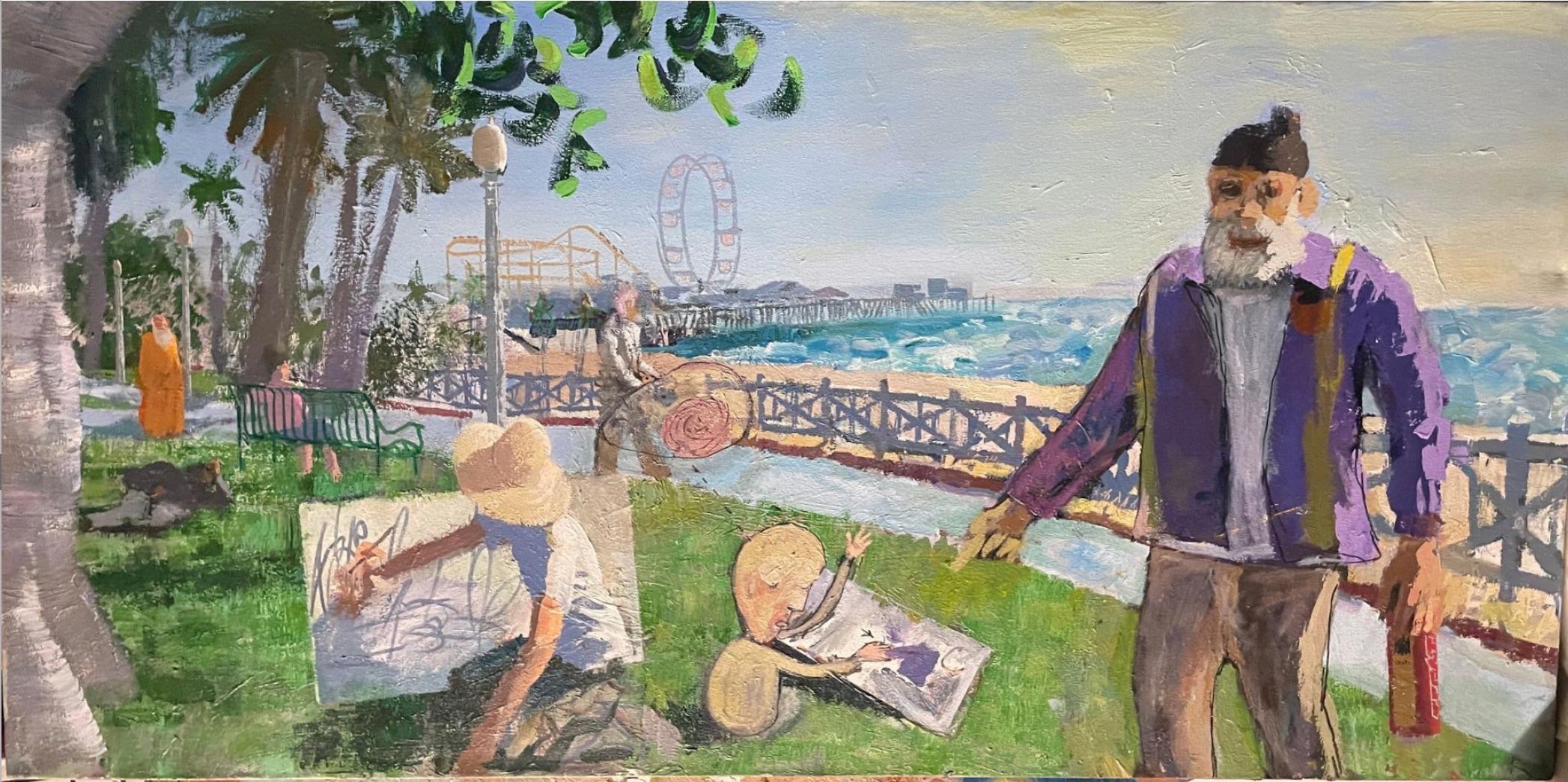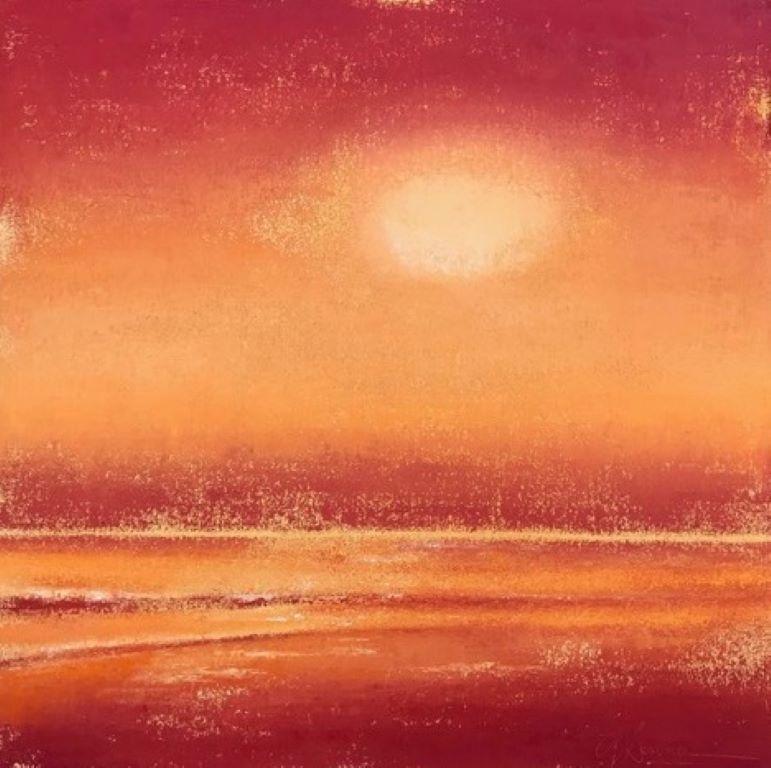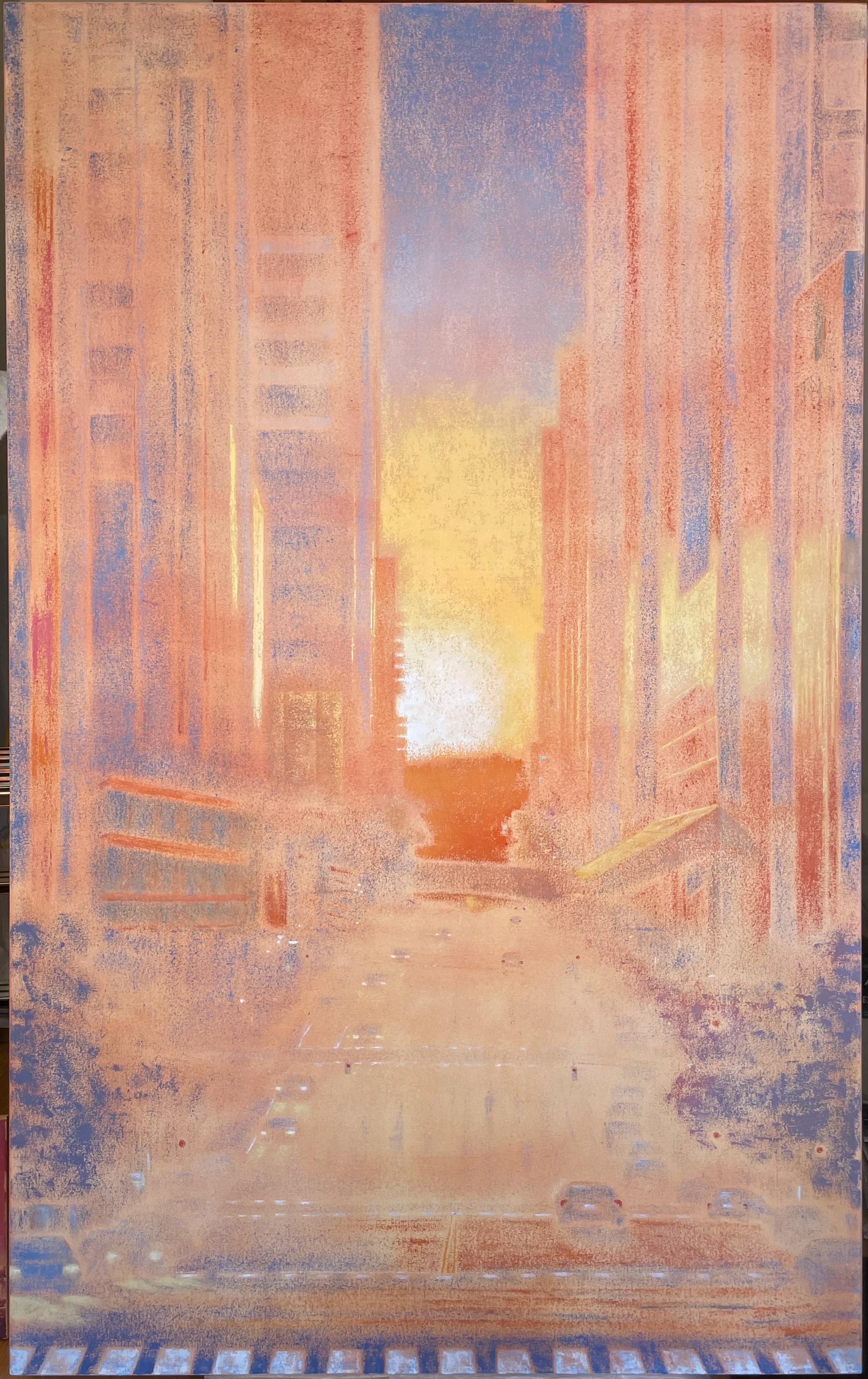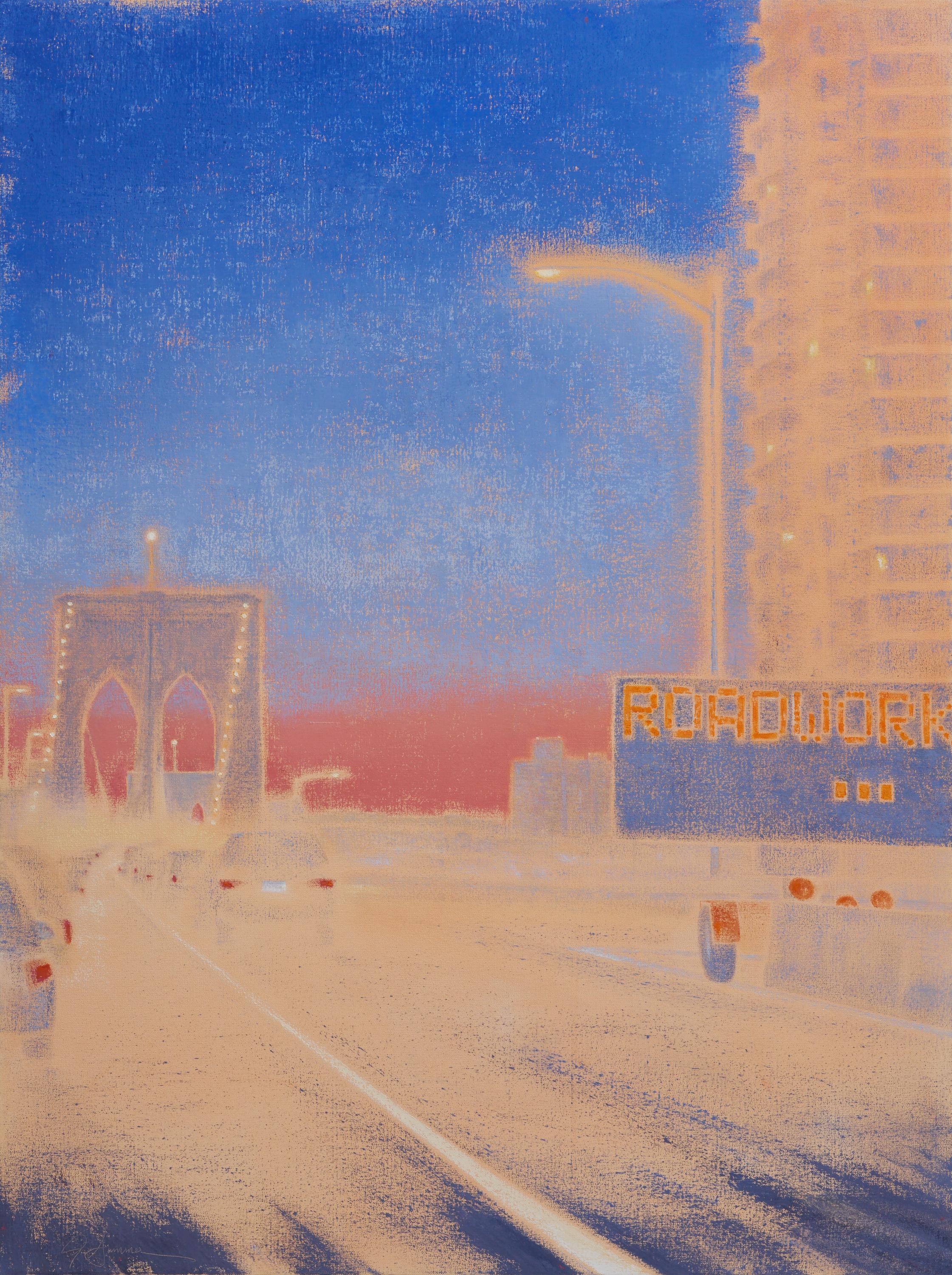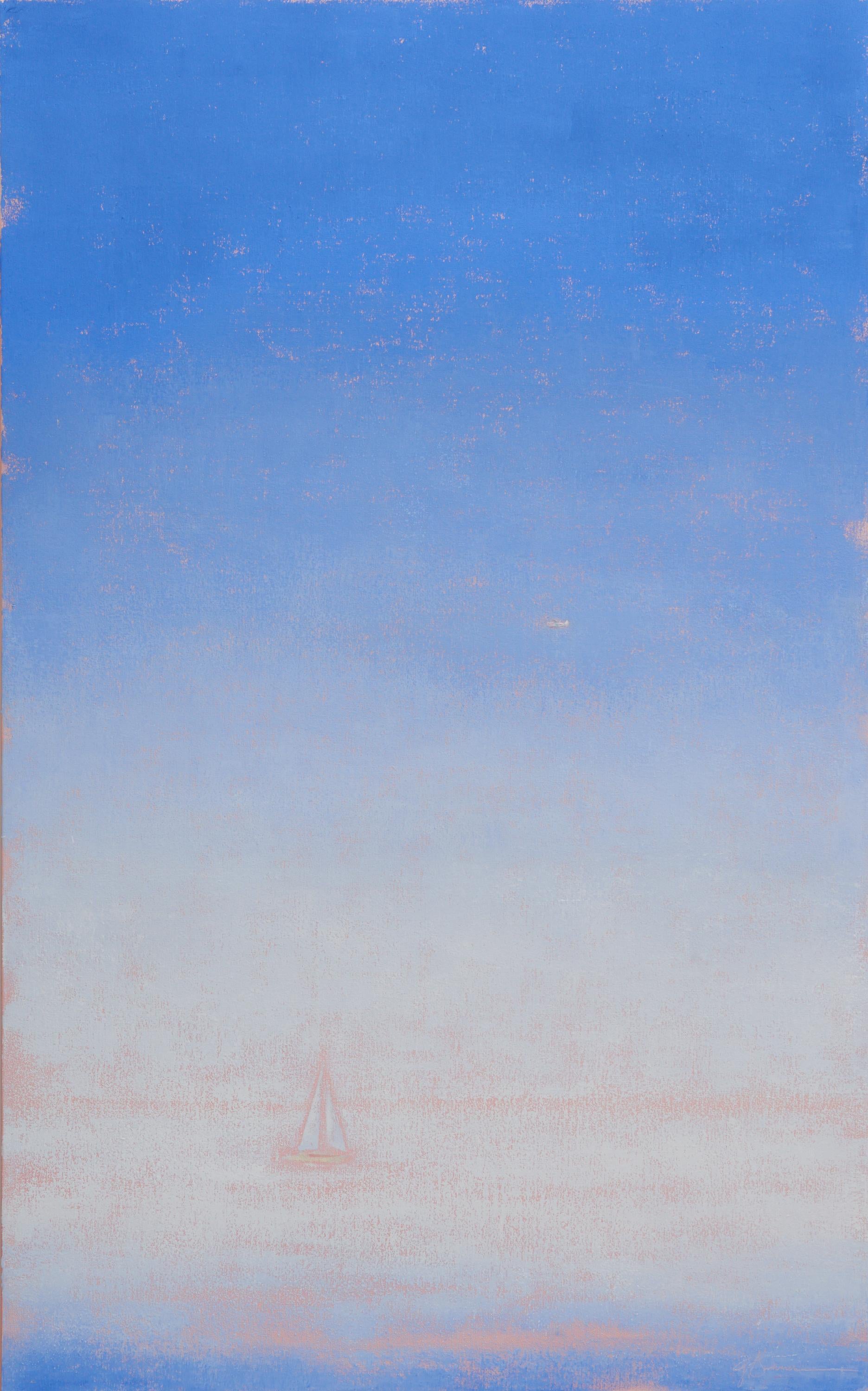Want more images or videos?
Request additional images or videos from the seller
1 of 8
Henri DuvieuxVue De Venise
About the Item
Henri Duvieux
French, 1855 – 1920
Vue De Venise
Oil on canvas
15 ¾ in. by 25 ½ in. W/frame 25 ¾ by 35 ½ in.
Signed lower right
Henri Duvieux was an artist influenced by the interest in Orientalism, a widespread preoccupation of many artists of the mid to late-nineteenth century. Duvieux used his travels to depict his interest in landscape and its effect, focusing less on the human element of Orientalism and more on simply the landscape and architecture. In doing so, he kept more of a distance between himself and the culture of the "Orient". His choice of imagery was popular not only because of its alliance with Orientalism, but also because it allowed the public to acknowledge an awareness of some sites the artist used.
Few details are known about his life, further complicated by the fact that he rarely exhibited at the Parisian Salon. He was born in 1855 in Paris. He entered studies as a student of a Mr. Marilhat, often cited as being Prosper Georges Antoine Marilhat, but this artist had already died eight years before Duvieux was even born. Despite this, his Salon entries do note that he was studying under a Marilhat, but just which one, if there were more than one, remains a mystery.
Duvieux debuted at the Parisian Salon in 1880 with Vue de Venise (View of Venice) and Vue de Constantinople (View of Constantinople), two oil paintings. Clearly Duvieux was an avid traveler, journeying as far as Constantinople searching for perfect inspiration. He must have undertaken such adventurous trips as a rather young man, since his Salon debut was at the age of twenty-five. The frequency of Duvieux's travel also is not known. He may have traveled rather infrequently, collecting studies along the way and executing them upon return to his studio. Or, he may have traveled frequently and executed scenes on the spot. Perhaps he had a studio in Venice, which would explain his frequent imagery from this site.
What can be said about this artist is that he relentlessly pursued representations of both Venice and Constantinople throughout his career, "according to the taste of the day" (Bénézit, Dictionnaire Critique des Peintres… (Paris: Librairie Grund 1976), pg. 76). Some of these other paintings based on Venice were Le Grand Canal a Venise (The Grand Canal at Venice), Coucher de Soleil a Venise (Setting Sun at Venice), and Panorama avec Voiliers et Gondoles a Venise (Panoramas with Sailboats and Gondolas in Venice), among many others. Another painting of Constantinople was Vue de Constantinople au Soleil Couchant (View of Constantinople with the Setting Sun).
He followed up his 1880 debut with another showing of Campement Arabe (Arab Camp) in 1882. This was actually his last showing at the Salon. Perhaps he did not take part in the Salons because he simply did not need to, his travels and his commissions may have kept him busy enough to support himself throughout his life. On the other hand, he may have also taken part in provincial exhibitions but this has yet to be confirmed.
Duvieux was endlessly fascinated by Venice and views of Constantinople, albeit less so with the latter. The majority of these views almost invariably incorporated aspects of the sea, somewhat in the tradition of the eighteenth century artist Canaletto, but also recalls his contemporary Felix Ziem, a nineteenth century French artist. Duvieux used Impressionist color similar to Turner's seascapes to convey intense light and brilliant sunsets and sunrises. Architectural elements were equally important to Duvieux, who render their details with care and precision.
Far from being an artist reluctant to have his work appeal to a large audience, these compositions would have been popular with the tourist public who approved of this type of imagery. Just like the proliferation of photographs and touristic postcards from foreign countries, artists also produced works which served the same purpose and proved very popular. Gerald Schurr commented that the "sensibility and the skill of his sunsets of Bosphorus manage to make one forget the slightly commercial aspect of his production of series...." (Schurr, Les Petits Maîtres de la Peinture, Paris: Editions de l'Amateur, 1975) Combined with the increasing ease of travel and subsequent surge in traveling, Duvieux's images found an audience seeking works that reminded them of their travels or of the travels that they wished they could take.
Provenance:
From a Long Island, NY Estate
Le Trianon Fine Art & Antiques
Art D259
- Creator:Henri Duvieux (1840, French)
- Dimensions:Height: 15.75 in (40.01 cm)Width: 25.5 in (64.77 cm)Depth: 1 in (2.54 cm)
- More Editions & Sizes:15 ¾ in. by 25 ½ in. W/frame 25 ¾ by 35 ½ in.Price: $9,800
- Medium:
- Movement & Style:
- Period:
- Condition:
- Gallery Location:Sheffield, MA
- Reference Number:
About the Seller
3.7
Vetted Seller
These experienced sellers undergo a comprehensive evaluation by our team of in-house experts.
1stDibs seller since 2017
46 sales on 1stDibs
- ShippingRetrieving quote...Ships From: Sheffield, MA
- Return PolicyThis item cannot be returned.
More From This SellerView All
- Montmartre -La Place Dutertre, Paris 1952By Jean SalabetLocated in Sheffield, MAJean Salabet French, 20th Century Montmartre Jean Salabet was a School of Paris painter know for his colorful Parisian cityscapes. His work is comparable to those of Jules Herve, An...Category
1950s Post-Impressionist Landscape Paintings
MaterialsOil
- Woman and ChildBy John Edward CostiganLocated in Sheffield, MAJohn Edward Costigan, N.A. American, 1888-1972 Woman and Child Oil on canvas Signed ‘J.E. Costigan N.A.’ lower left 24 by 30 in. W/frame 32 by 38 in. John Costigan was born of Irish-American parents in Providence, Rhode Island, February 29, 1888. He was a cousin of the noted American showman, George M. Cohan, whose parents brought the young Costigan to New York City and was instrumental in starting him on a career in the visual arts. They were less successful in encouraging him to pursue formal studies at the Art Students League (where, however, he later taught) than in exposing him to the commercial art world through the job they had gotten him with the New York lithographing firm that made their theatrical posters. At the H. C. Miner Lithographing Company, Costigan worked his way up from his entry job as a pressroom helper, through various apprenticeships, to the position of sketch artist. In the latter capacity he was an uncredited designer of posters for the Ziegfeld Follies and for numerous silent films. Meanwhile, he had supplemented his very meager formal studies in the fine arts with a self-teaching discipline that led to his first professional recognition in 1920 with the receipt of prizes for an oil painting and watercolor in separate New York exhibitions. A year earlier, Costigan had wed professional model Ida Blessin, with whom he established residence and began raising a family in the sleepy little rural New York hamlet of Orangeburg, the setting for the many idyllic farm landscapes and wood interiors with which he was to become identified in a career that would span half a century. John Costigan’s first national recognition came in 1922 with his winning of the coveted Peterson Purchase prize of the Art Institute of Chicago for an oil on canvas, “Sheep at the Brook.” It marked the start of an unbroken winning streak that would gain him at least one important prize per year for the remainder of the decade. The nation’s art journalists and critics began to take notice, making him the recurring subject of newspaper features and magazine articles. The eminent author and critic Edgar Holger Cahill was just a fledgling reporter when he wrote his first feature, “John Costigan Carries the Flame,” for Shadowland Magazine in 1922. Costigan had his first one-man show of paintings at the Rehn Gallery on New York’s 5th Avenue in November, 1924, to be followed less than three years later by another at the Art Institute of Chicago. In addition, Costigan’s work has been—and continues to be included, side-by-side with that of some of America’s most high-profile artists, in museum and gallery exhibitions throughout the country. His renown had peaked in the early 1930s, by which time his work had been honored with nearly every major award then being bestowed in the fine arts and had been acquired for the permanent collections of several prestigious American museums, including New York’s Metropolitan (which only recently, in 1997, deaccessioned his “Wood Interior,” acquired in 1934). Although Costigan’s celebrity had ebbed by the late 1930s, the Smithsonian Institution saw fit in 1937 to host an exhibition exclusively of his etchings. And, in 1941, the Corcoran Gallery (also Washington, D.C.) similarly honored him for his watercolors. (Another Washington institution, the Library of Congress, today includes 22 Costigan etchings and lithographs in its permanent print collection.) During World War II, Costigan returned briefly to illustrating, mainly for Bluebook, a men’s pulp adventure magazine. A gradual revival of interest in his more serious work began at the end of the war, culminating in 1968 with the mounting of a 50-year Costigan retrospective at the Paine Art Center and Arboretum in Oshkosh, Wisconsin. Oils, watercolors and prints were borrowed from museums and private collections throughout the country, and the exhibition was subsequently toured nationally by the Smithsonian Institution. John Costigan died of pneumonia in Nyack, NY, August 5, 1972, just months after receiving his final prestigious award —the Benjamin West Clinedinst Medal of the Artist’s Fellowship, Inc., presented in general recognition of his “...achievement of exceptional artistic merit...” in the various media he had mastered in the course of his career. This painting depicts one of the artist's favorite themes --the farm family bathing...Category
1940s Post-Impressionist Landscape Paintings
MaterialsOil
- Moulin Rouge, ParisBy Jean SalabetLocated in Sheffield, MAJean Salabet French, B. 1900 Moulin Rouge Jean Salabet was a School of Paris painter know for his colorful Parisian cityscapes. His work is comparable to those of Jules Herve, Antoi...Category
1950s Post-Impressionist Landscape Paintings
MaterialsOil
- Flower Market, La Madeleine, ParisBy Antoine BlanchardLocated in Sheffield, MAAntoine Blanchard French, 1910-1988 Flower Market, La Madeleine, Paris Oil on canvas 13 by 18 in. W/frame 19 by 24 in. Signed lower right Provenance: Catalda Fine Arts, Inc., New York Private Collection, New York Trinity House Paintings, London Private Collcetion, New York Alexander Avenard Collection Le Trianon...Category
Mid-20th Century Post-Impressionist Landscape Paintings
MaterialsOil
- Marche de Fleurs, a La Madeleine Paris 1954By Jean SalabetLocated in Sheffield, MAJean Salabet French, 20th Century Marche de Fleurs, La Madeleine Paris Jean Salabet was a School of Paris painter know for his colorful Parisia...Category
1950s Post-Impressionist Landscape Paintings
MaterialsOil
- At The SeasideBy Gaston SebireLocated in Sheffield, MAGaston Sebire French, 1920-2002 At The Seaside Oil on canvas 25 by 31 in. W/frame 33 ½ by 39 ½ in. Signed lower right Gaston Sebire (1920 – 2002) Gaston Sebire, was one of Europe’s leading landscapists, was born in the village of Saint-Samson in Normandy in 1920. A self taught artist, he began to paint seriously at the age of eighteen. For eight years he worked as a postal clerk in the Rouen, sorting letters at night in order to support his career as a painter. In 1952 Gaston Sebire had his first exhibition at the Galerie Gosselin in Paris. The following years he enjoyed the double triumph of winning both the coveted Prix de la Critique and the Prix Casa Velasquez. The Latter award made it possible for him to spend a year and a half in Spain. Of this formative period he said, “They were my first, wonderful years without worry. For fifteen years I had never known what the next day would bring.” The year 1957 marked another important stage in his career. His painting “La Dinde” won the Greenshields Prize in a field of 136 competitors, making it possible for him to paint for another two years without the worry of finances. Winning the awards naturally drew public attention to the artist from Normandy, and his works were presented in highly successful one-man shows in Paris. Sebire was a Norman, a man strongly attached to the soil, and after his exhibitions in Paris, he returned to Rouen to his large house overlooking the town and once again plunged into painting the countryside. Gaston Sebire was a strongly built man with square hands and a rather heavy walk. He had immense vitality, and used that to his advantage. As he said of himself, “When the snow falls, I can’t stay indoors. I set out with my paint box. I paint outdoors from nine in the morning until five at night. If it were only a question of money, one could just as well paint in one’s own room.” But Sebire went into the countryside, or into the village, and sets up his easel. When there is a café into which people are going; there is a fence, a telegraph pole, a few buildings in the background. The scene takes on life, vivid life, with a sense of some event about to take place in the scene. Like many artists, and like a typical Norman, Sebire was silent and solitary by nature, with a personality as strong and frank as his paintings. A painting, he says, “must have an element of mystery, show an effort to look beyond the aura surface of things.” Sebire’s early paintings were somber with much use of black and white tones. In 1970 he turned to colour. The subtle light of the Normandy skies; the shifting light and color along the seacoast; the magnificent blues of the Rouen pottery...Category
1960s Post-Impressionist Landscape Paintings
MaterialsOil
You May Also Like
- Donut DetourBy Gay Summer RickLocated in Santa Monica, CAOriginal Oil on canvasCategory
21st Century and Contemporary Post-Impressionist Landscape Paintings
MaterialsOil
- The Ballad of Jesse V.By Alex Schaefer and AiromLocated in Santa Monica, CAPlein air collaboration between two artists of different disciplines, accompanied by a poet. A gentleman Jesse V. approached the artists and told him his story while they were painti...Category
21st Century and Contemporary Post-Impressionist Landscape Paintings
MaterialsOil, Acrylic
- October HeatBy Gay Summer RickLocated in Santa Monica, CAOil on canvasCategory
2010s Post-Impressionist Landscape Paintings
MaterialsCanvas, Oil
- PhenomenonBy Gay Summer RickLocated in Santa Monica, CAOil on canvasCategory
2010s Post-Impressionist Landscape Paintings
MaterialsCanvas, Oil
- Off to WorkBy Gay Summer RickLocated in Santa Monica, CAOil on canvasCategory
2010s Post-Impressionist Landscape Paintings
MaterialsCanvas, Oil
- Layers of Fog Before NoonBy Gay Summer RickLocated in Santa Monica, CAOil on canvasCategory
2010s Post-Impressionist Landscape Paintings
MaterialsCanvas, Oil
Recently Viewed
View AllMore Ways To Browse
Henri Studios
Antique De Provence
Antique Light Posts
Antique Light Post
Antique Painting Art Collectibles
Ny Estate
Maitres De
Brilliant Art Productions
Antique French Country Paintings
Antique Landscape Photographs
Venice Antique Paintings
Antique Paintings Of Venice
Les Maitres De
Petit 1889
Camping Trip
Antique French Painting Man
The Last Sunset Painting
Antique Gondola
